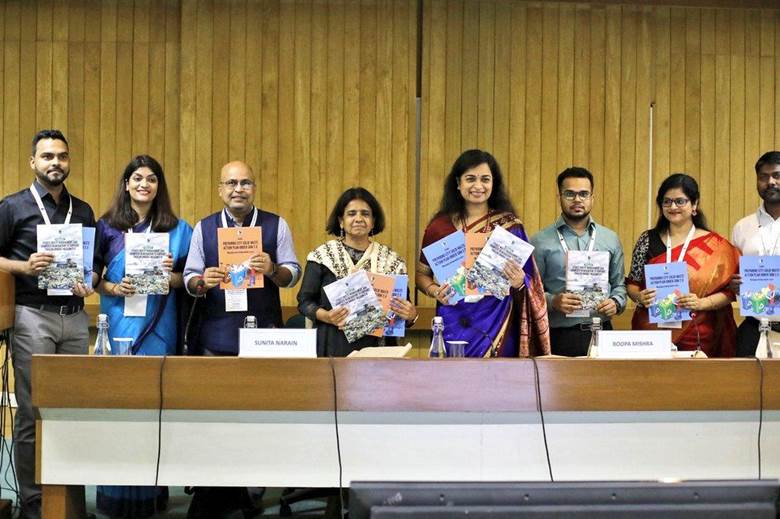Description

Copyright infringement not intended
Context: Chronic negligence of sustainable and scientific treatment has resulted in an ever-growing mass of municipal solid waste (MSW) making its way into dumpsites in India, a report released by Delhi-based think tank, Centre for Science and Environment (CSE), noted.

Details:
- The management of legacy waste should be combined with integrated waste management facilities that can take care of both daily MSW as well as waste trapped in dumpsites, the report, titled Legacy Waste Management and Dumpsite Remediation to Support SBM 2.0, urged.
- Although the term ‘legacy waste’ has not been defined in any official government document in India, it typically refers to aged MSW in landfills or dumpsites.
- There is no information on how old waste must be in order to qualify to be called legacy waste.
- Legacy waste is a mix of partially or completely decomposed biodegradable waste, plastic waste, textiles, metals, glass and other components.
- The Union Ministry of Housing and Urban Affairs (MoHUA) has recognised that unlined dumpsites are causing air and water pollution and creating long-term environmental and health hazards
- The operational guidelines of the Centre’s flagship Swachh Bharat Mission 2.0 had made it mandatory for cities with a population of less than a million to clear legacy waste sites by March 31, 2023. Cities with a population of more than a million are to remediate their dumpsites by March 31, 2024.
- The analysis noted that the composition of legacy waste varied according to the region and age of a dumpsite. For example, the proportion of fines in Hyderabad and Delhi was nearly 75 per cent, which indicated that the dumpsites were old and organic waste had been degraded over many years.
- However, the proportion of fines is relatively lower in the case of Ahmedabad and Mumbai, reflecting that these dumpsites are newer. The quantity of recyclables depends on the activities of the informal sector engaged in extracting recyclables.
- It also mentioned the phenomenon of fires in dumpsites. The reason for this was methane produced by dumpsites and landfills as a result of a biochemical process called ‘methanogenesis’.
- This process took place because of the action of a specific class of bacteria known as methanogens. Methanogenesis is responsible for mineralisation of the organic portion of MSW in a dumpsite.
- Therefore, aged waste or legacy waste has nominal carbon content (in the range of 3–9 per cent).
- Infamous dumpsites like Deonar in Mumbai; Bawana, Bhalswa, Ghazipur, Narela and Okhla in Delhi; Bingipura and Laksmipura in Bengaluru; and Dhapa and Garden Reach in Kolkata are a few examples of unscientific landfills in India.
- While the cities in India dive into remediation of legacy waste, it would be critical to ensure gainful application and final disposal of the extracted fractions received from the existing garbage mountains.
- The challenge would be to create a value chain and perspective planning involving multiple stakeholders in the process.
- Also the management of fresh municipal solid waste was extremely important because it was practically impossible to complete the biomining (extracting valuable metals) of legacy waste if the dumpsites received a significant fraction of fresh MSW every day, she added.
- “Collected waste might include recyclables picked up by informal sector workers as well as waste that finds its way into aquatic and terrestrial systems such as drains, rivers, ponds, lakes, sewer lines, empty plots of land and garbage heaps alongside roads and highways,” according to the 2019-20 Central Pollution Control Board Annual Report.
- It added that smaller garbage heaps alongside roads and streets were not typically identified as dumpsites but needed to be cleared by adopting the appropriate process.
- In 2019–20, more than half of the waste (80,000 tonnes per day) generated in India was disposed of in dumpsites or remained unattended.
- On July 17, 2019, the National Green Tribunal passed an order directing that capping of legacy waste would lead to huge environmental and health consequences. The tribunal suggested biomining and bioremediation as environmentally safe and the most preferable approaches to dumpsite remediation.
- It directed that action plans be prepared and implemented by all municipal corporations of Delhi. CPCB was to verify waste clearance according to norms and submit a report.
https://www.downtoearth.org.in/news/waste/neglect-of-sustainable-scientific-waste-treatment-behind-india-s-unscientific-landfills-cse-analysis-84942















